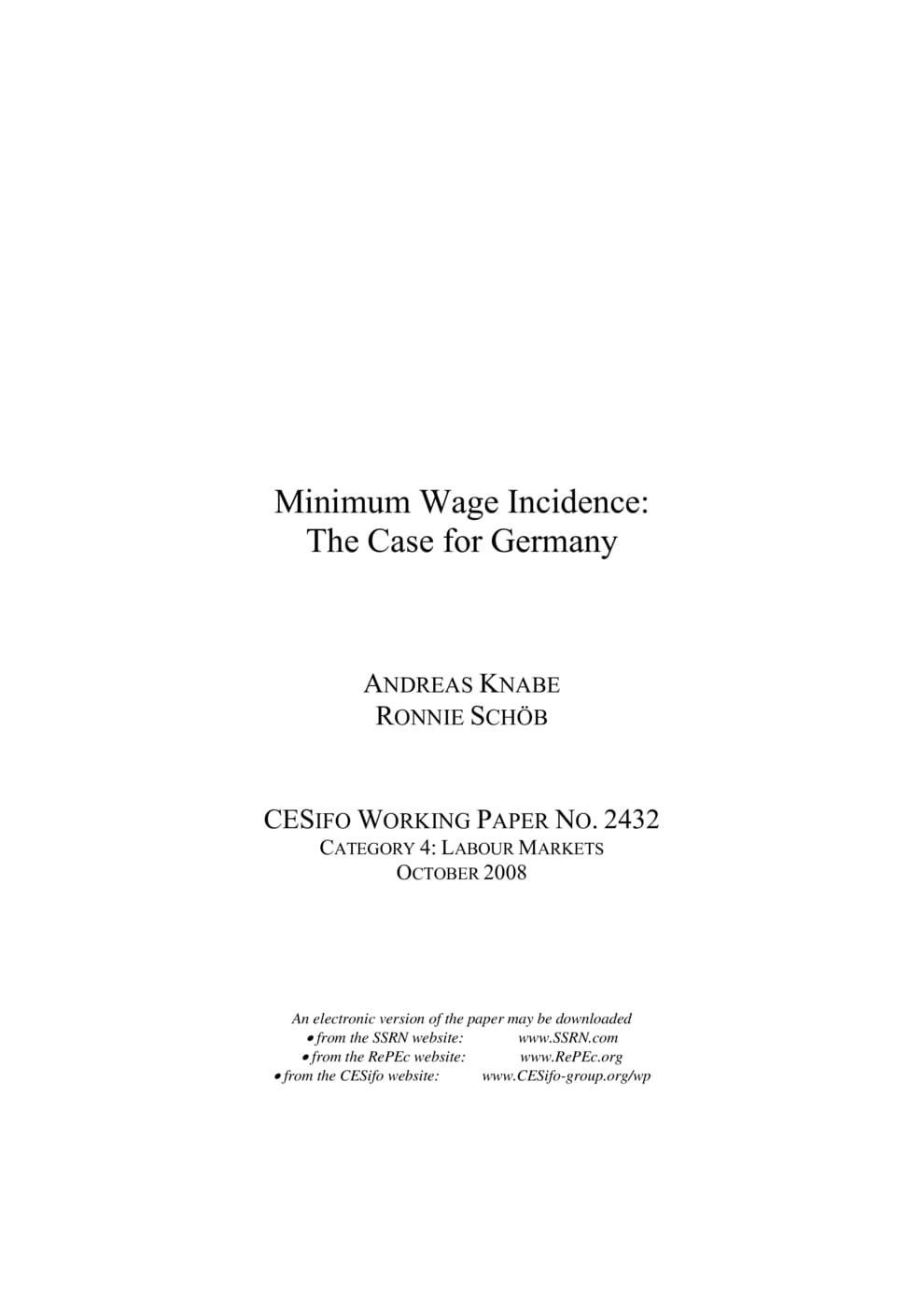Minimum Wage Incidence: The Case for Germany
CESifo, Munich, 2008
CESifo Working Paper No. 2432

Using data from the 2006 wave of the German Socio-Economic Panel (GSOEP), this paper analyzes how a minimum wage affects employment, wage inequality, public expenditures, and aggregate income in the low-wage sector. It is shown that a statutory minimum wage of EUR 7.50 per hour would cost 840,000 low-paid jobs and increases the fiscal burden by about EUR 4 billion per year, while household income rises only by EUR 1.1 billion per year. Poor households, i.e. those eligible for Unemployment Benefits II, do not benefit from a minimum wage at all. Comparing the effects of a minimum wage with different types of wage subsidies that require the same additional public expenditures, the government can ensure more favorable employment – depending on the subsidies’ incidence – and income effects. Wage subsidies also allow a more equal income distribution than statutory minimum wages. Combining a minimum wage with a wage subsidy, similar to the French minimum wage system, is extremely costly while such a policy is inferior to wage subsidies in all respects.
Labour Markets